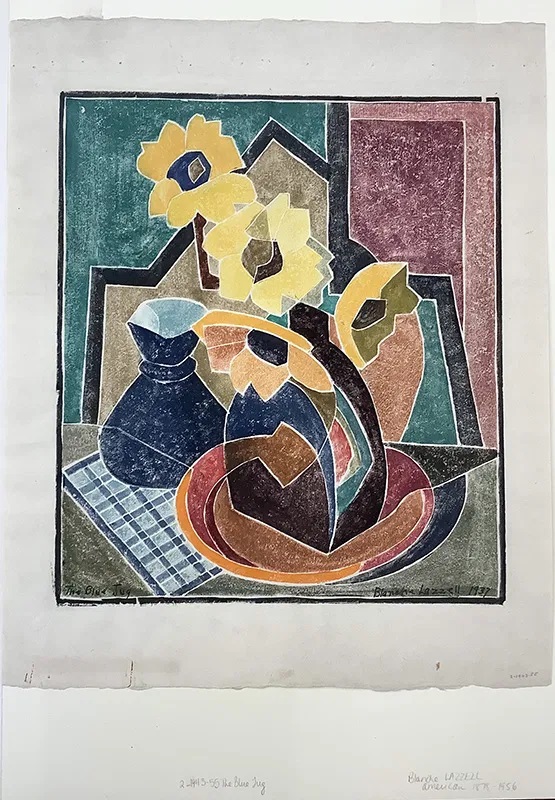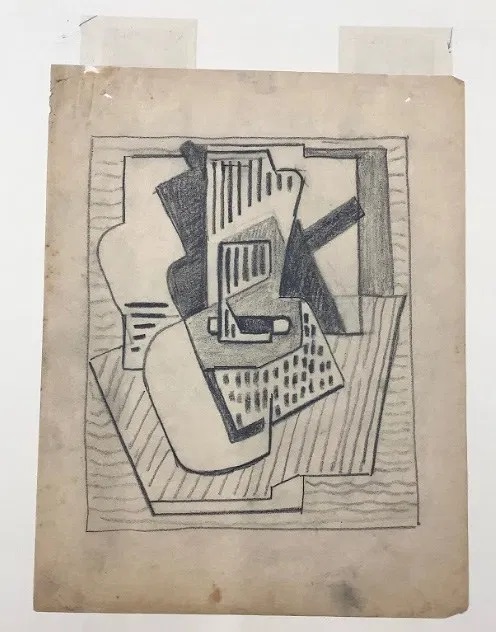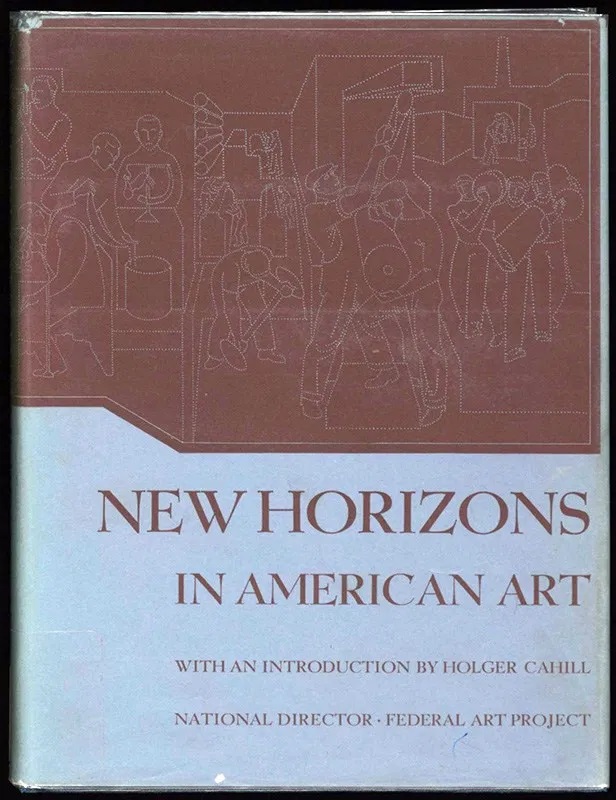Blanche Lazzell, Patty Willis, and American Modernist Design
by Alison Printz
A Decorative Arts Summer Research Grant supported by the Center for American Art allowed me to make concrete connections that constitute the basis for a chapter of my dissertation on Modern Appalachian Art. This research created an opportunity to expand conversations of regionalisms in American Art to include the Appalachian region.
Thanks to the grant, I studied American modernist works by Blanche Lazzell at the Philadelphia Museum of Art (PMA), The Art Museum at West Virginia University (WVU), and the Museum of Modern Art (MoMA) in New York City. Additionally, I studied the work of Patty Willis, a contemporary and friend of Lazzell, who worked in similar mediums and locations.
Lazzell spent much of her life traveling between her home in West Virginia and Provincetown, MA, New York, NY, and Pittsburgh, PA, but remained informed by her heritage. I was first struck by Lazzell’s work when I encountered Zinnias, a woodcut from 1920, at the Philadelphia Museum of Art. After examining Appalachian images in my doctoral studies at the Tyler School of Art, Lazzell quickly became a prime example of regionalism through her Provincetown print method and paintings, combining sleek design elements with rustic botanical depictions specific to Appalachia. I viewed Zinnias in conjunction with several other works created for the Works Progress Administration (WPA) in the 1930s, including The Blue Jug from 1937, and was able to see her methods continue as her career developed.
Through my research in the MoMA archives, I discovered that Lazzell was involved in a large show of WPA works in 1936, New Horizons in American Art, curated by Holger Cahill, who was the national director of the WPA. I was able to view the show’s catalog and curatorial files.
In Morgantown, WV, I met with Bob Bridges, the director of the Art Museum of WVU and one of the authors of Lazzell’s catalog raisonné. WVU holds the largest public collection of Lazzell’s work, and I was able to view several prints and paintings, including her 1934 mural, Justice, for the county courthouse in Morgantown. Although working within the confines of a government-funded, large-scale project, Lazzell incorporated Cubist elements and stayed true to her artistic style.
I focused on the work of Lazzell’s contemporary, Patty Willis, in Jefferson County, WV, cataloging her large collection of work in tandem with her estate. Willis shared training abroad with French artists Fernand Legér and Albert Gleizes, contributing to their Cubist variants in design. In preparation for an upcoming show at WVU, I attempted to make connections between Willis and Lazzell through both craft and fine art, and, fortunately, they share many.
This Summer Research Grant allowed me to explore connections in design, Cubism, and Appalachian Regionalism through the works of Blanche Lazzell and Patty Willis. Their careers were informed by American Art and the transnational exchange with Europe but remained true to the regional aesthetic of their West Virginia roots.
About The Decorative Arts Trust Bulletin
Formerly known as the "blog,” the Bulletin features new research and scholarship, travelogues, book reviews, and museum and gallery exhibitions. The Bulletin complements The Magazine of the Decorative Arts Trust, our biannual members publication.











